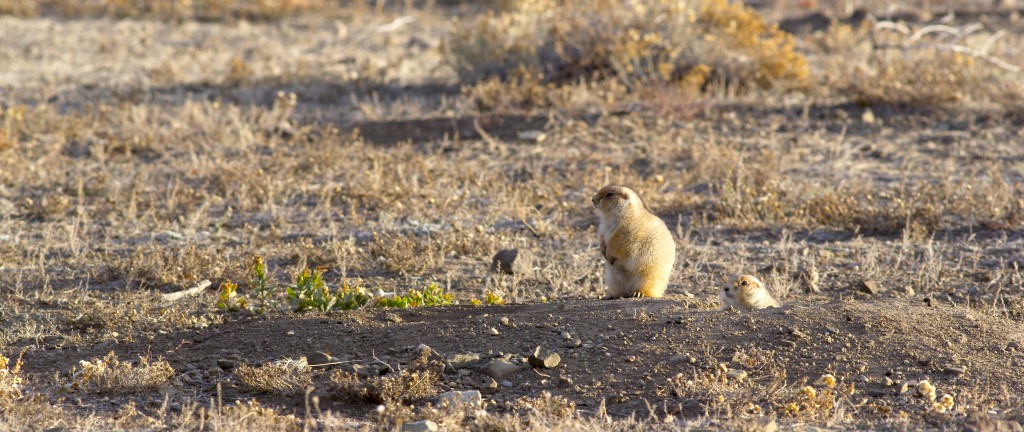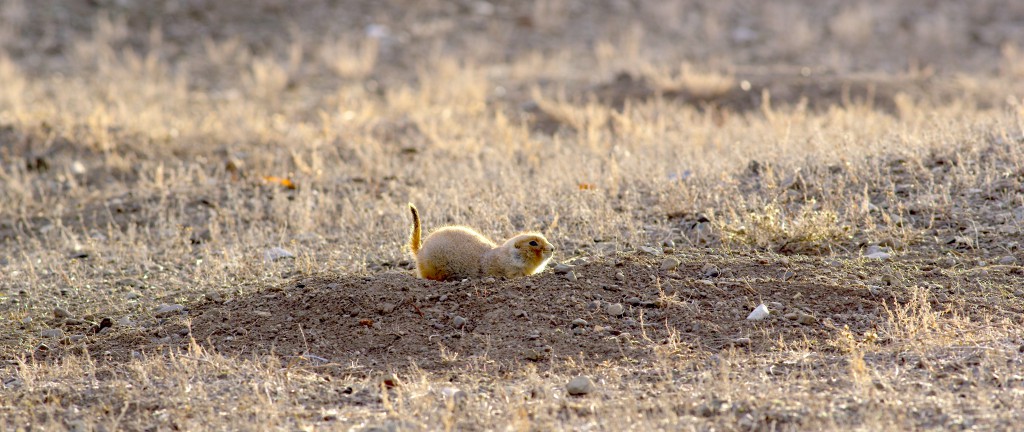In the 1970s as the Interstate Highway System was finishing up, Edward Boehm of Livingston petitioned for the preservation of this black tailed prairie dog town. An iconic (albeit, not very grand) inhabitant of the American West, black tailed prairie dogs populate prairie lands from Mexico to Canada. They were one of two species of prairie dogs described by the Lewis and Clark Expedition in 1805. As the Expedition discovered, the little creatures have surprisingly elaborate tunnel systems, with burrows extending as much as 25 feet in length and seven feet deep. Each burrow has distinct chambers for different functions, and two entrances. Prairie dogs will build as many 20 burrows per acre. In his journal, Clark recounted trying to capture a specimen, first by digging a hole. When the hole reach six feet deep and no end in sight, they poured five barrels of water down the hole, trying to drive the animals to the surface, but this too proved ineffective.
Although devastating to cropland, black tailed prairie dog colonies can improve the prairieland ecosystem by providing prey, shelter and forage for a wide variety of prairie animals, including burrowing owls, black footed ferrets and mountain plovers. The 98 acre Greycliff Prairie Dog Town is located for just a few seconds off of Interstate 90 east of Big Timber. There is a picnic area for visitors, as well as interpretive displays explaining the significance of these entertaining little animals.



